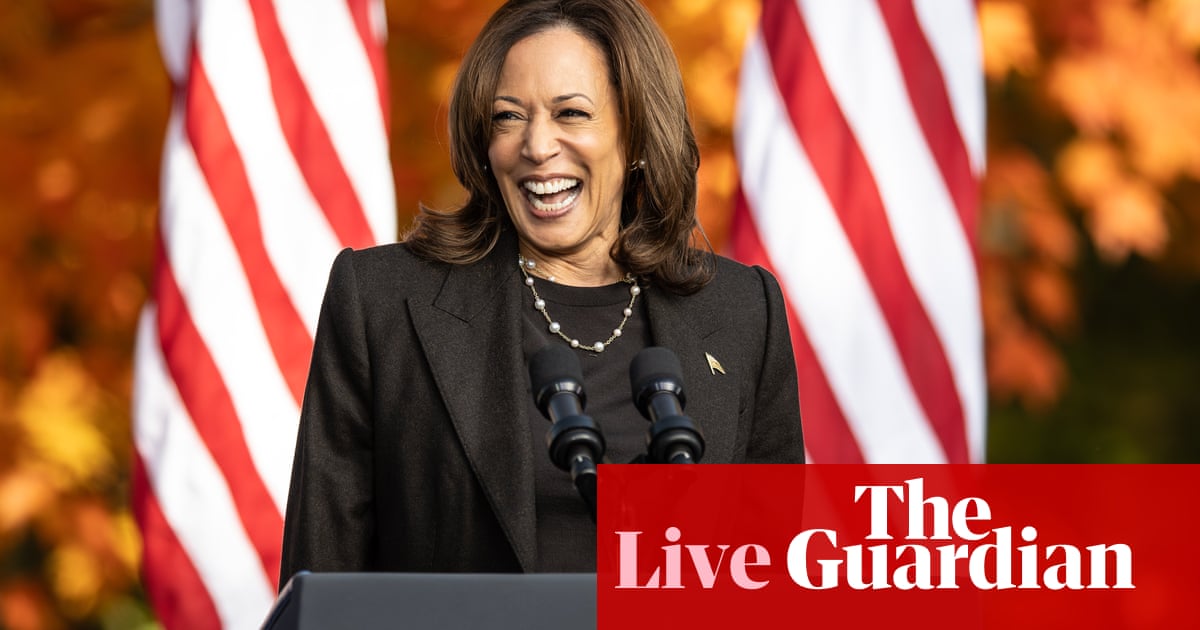Even though the United States touts its status as one of the world’s leading democracies, its citizens do not get to directly choose the president. That task is reserved for the electoral college – the convoluted way in which Americans have selected their president since the 18th century.
Contrary to its name, the electoral college is more a process than a body. Every four years, in the December following an election, its members – politicians and largely unknown party loyalists – meet in all 50 states on the same day and cast their votes for president. Then they essentially disappear.
In recent years there has been growing criticism of the electoral college, accelerated by the fact that two Republican presidents – George W Bush in 2000 and Donald Trump in 2016 – have been elected president while losing the popular vote. But there’s no sign that US elections will change any time soon.
Here’s everything you need to know
What exactly is the electoral college?
Article II of the US constitution lays out the process by which a president is elected.
Each state has a number of electors that’s equal to the total number of representatives and senators it has in Congress. Washington DC gets three electoral votes. In total, there are 538 electors. A candidate needs the votes of 270 of them, a simple majority, to win.
The constitution says that state legislatures can choose how they want to award their electors. All but two states have long chosen to use a winner-take-all system – the winner of the popular vote in their state gets all of the electoral votes.
To complicate matters further, two states, Maine and Nebraska, award their electors differently. In both states, two electoral college votes are allocated to the statewide winner. Each state then awards its remaining electors – two in Maine and three in Nebraska – to the winner in each of the state’s congressional districts.
Why does the US have an electoral college?
When the founding fathers gathered in Philadelphia to draft the US constitution in 1787, they had a lot of trouble figuring out a system for choosing a chief executive. Initially, they proposed a plan that would have Congress choose the president. But that led to concerns that the executive branch, designed to be independent from Congress, would be subject to it.
A contingent of the delegates also favored electing the president through a direct popular vote. But the idea never got broad support and was shut down repeatedly during the convention, the historian Alexander Keyssar wrote in his book Why do we still have the electoral college.
There were a number of reasons the idea was not widely popular. First, the convention had adopted the racist three-fifths compromise in which slaves were counted as three-fifths of a person for population purposes. This was a win for the southern states, in which slaves made up a sizable chunk of the population. A popular vote system would have disadvantaged the southern states because they had fewer people who could vote.
There were also concerns about giving too much power to larger states and that voters would be unable to learn about the candidates from different states, according to Keyssar. It was a debate driven more about pragmatics than about political rights, he writes.
Towards the end of the convention, a committee of 11 delegates was appointed to deal with unresolved matters and one of them was how to select the president. They proposed a version of what we have now come to understand as the electoral college.
“This brief nativity story makes clear that the presidential election system enshrined in the Constitution embodied a web of compromises, spawned by months of debate among men who disagreed with one another and were uncertain about the best way to proceed,” Keyssar wrote. “It was, in effect, a consensus second choice, made acceptable, in part, by the remarkably complex details of the electoral process, details that themselves constituted compromises among, or gestures toward, particular constituencies and convictions.”
What is a swing state?
States that either presidential candidate has a good shot at winning are often called “swing states”.
In the 2024 election, there are seven swing states: Pennsylvania (19 electoral votes), Wisconsin (10 electoral votes), Michigan (15 electoral votes), Georgia (16 electoral votes), North Carolina (16 electoral votes), Arizona (11 electoral votes), and Nevada (six electoral votes). Whichever candidate wins the election must carry some combination of those states, which is why the candidates will spend the majority of their time and resources there. Joe Biden carried all of those states bar North Carolina in the 2020 election.
The idea of a swing state can also change over time because of changing demographics. Until recently, for example, Ohio and Florida were considered swing states, but they are now considered pretty solidly Republican. Michigan was considered a pretty solid Democratic stronghold until Donald Trump won it in 2016.
Does the electoral college allow for minority rule?
There have been five elections in US history – in 1824, 1876, 1888, 2000 and 2016 – in which the candidate who became the president did not win the popular vote. This has led to wider recognition of imbalances in the system and a push from some to abolish the electoral college altogether.
The loudest criticism is that it’s a system that dilutes the influence of a presidential vote depending on where one lives. A single elector in California represents more than 726,000 people. In Wyoming, an elector represents a little more than 194,000 people.
Another critique is that the system allows a tiny number of Americans to determine the outcome of the presidential election. In 2020, about 44,000 votes between Wisconsin, Georgia and Arizona allowed Biden to win the electoral college. Such a slim margin is extraordinary in an election that 154.6 million people voted in.
In 2016, about 80,000 combined votes gave Trump his winning margins in key swing states.
Do electors have to vote for a specific candidate?
State political parties choose people to serve as electors who they believe are party stalwarts and will not go rogue and cast a vote for anyone other than the party’s nominee. Still, electors have occasionally cast their votes for someone else. In 2016, for example, there were seven electors who voted for candidates other than the ones they were pledged to. That was the first time there was a faithless elector since 1972, according to the National Conference of State Legislatures.
Many states have laws that require electors to vote for the candidate they are pledged to. In 1952, the US supreme court said that states could compel electors to vote for the party’s nominee. And in 2020, the court said that states could penalize electors who don’t vote for the candidate they’re pledged to.
How has the electoral college remained in place for so long?
Since almost immediately after the electoral college was enacted, there have been efforts to change it. “There were constitutional amendments that were being promoted within a little more than a decade after the constitution was ratified,” Keyssar said. “There have been probably 1,000 or more constitutional amendments to change it or get rid of it filed since 1800. Some of them have some close.” (There were more than 700 efforts as recently as 2019, according to the Congressional Research Service.)
When the idea of a national popular vote was proposed in 1816, Keyssar said, southern states objected. Slaves continued to give them power in the electoral college, but could not vote. “They would lose that extra bonus they got on behalf of their slaves,” he said.
After the civil war, African Americans were legally entitled to vote, but southern states continued to suppress them from casting ballots. A national popular vote would have diminished their influence on the overall outcome, so they continued to support the electoral college system.
The country did get close to abolishing the electoral college once, in the late 1960s. In 1968, George Wallace, the southern segregationist governor, almost threw the system into chaos by nearly getting enough votes to deny any candidate a majority in the electoral college. The US House passed the proposed amendment 339 to 70. But the measure stalled in the Senate, where senators representing southern states filibustered.
That led to continued objections to a national popular vote so that southern white people could continue to wield power, according to the Washington Post. President Jimmy Carter eventually endorsed the proposal, but it failed to get enough votes in the Senate in 1979 (Joe Biden was one of the senators who voted against it).
“It’s not like we are suddenly discovering this system really doesn’t work,” Keyssar said.
Is there any chance of getting rid of the electoral college now?
The most prominent effort to get rid of the electoral college today is the National Popular Vote Interstate Compact. The idea is to get states to agree to award their electors to the winner of the national popular vote, regardless of the outcome in their specific state. The compact would take effect when states having a total of 270 electoral votes – enough to determine the winner of the election – join.
So far 16 states and Washington DC – a total of 205 electoral votes – have joined the effort.
But the path ahead for the project is uncertain. Nearly all of the states that haven’t joined have either a Republican governor or legislature. And legal observers have questioned whether such an arrangement is constitutional – something that would probably be quickly put to the US supreme court.

 German (DE)
German (DE)  English (US)
English (US)  Spanish (ES)
Spanish (ES)  French (FR)
French (FR)  Hindi (IN)
Hindi (IN)  Italian (IT)
Italian (IT)  Russian (RU)
Russian (RU)  3 hours ago
3 hours ago
























Comments